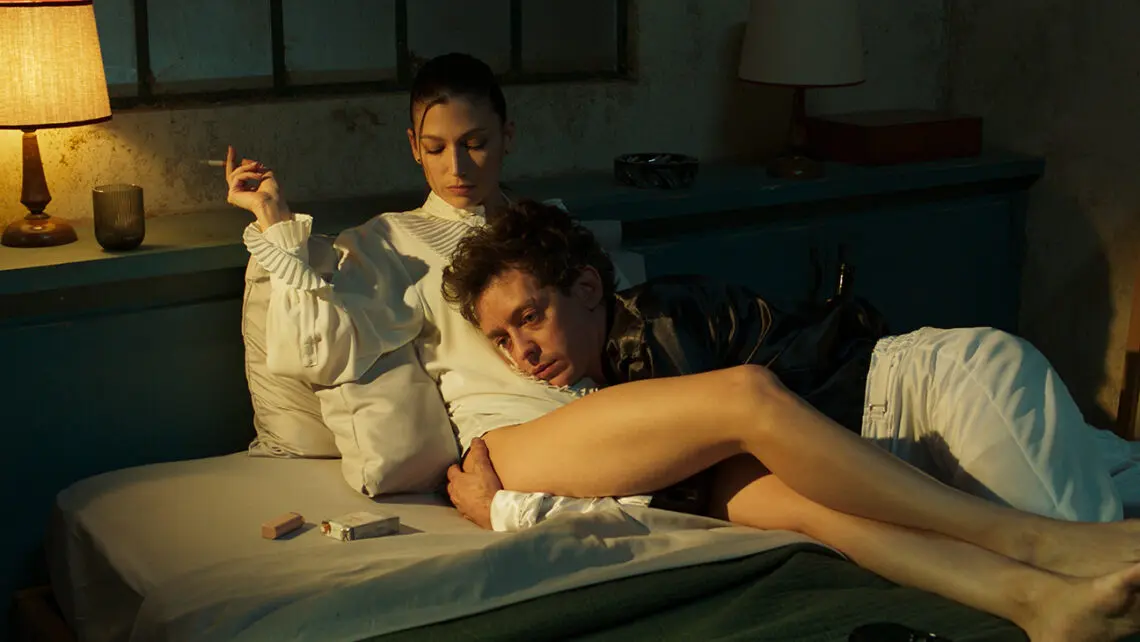When passion meets persistence: the unique journey of ‘Kill the Jockey’
“It’s not for us.” Those four words are the bane of every filmmaker’s pitch. Luis Ortega heard them repeatedly when trying to finance his latest feature, the surrealist, genre-defying film Kill the Jockey.
A track record of riveting storytelling
Ortega, a name well-established in Argentine cinema since his first feature Caja Negra in 2003, carved out a niche with his unique narrative style. However, his previous acclaim didn’t ease the journey for Kill the Jockey. Despite the success of his prior work El Angel, which competed in Cannes’ Un Certain Regard in 2019, the unique portrayal of identity in Kill the Jockey was deemed too esoteric by many.
The unpitchable movie
The plot of Kill the Jockey centers on a jockey, Remo Manfredini (played by Nahuel Pérez Biscayart), whose identity, already fragmented by trauma, drugs, and alcohol, undergoes continuous transformation following a racing accident and head injury. Ortega’s vision was to explore the ever-evolving nature of identity through a series of bewildering transformations.
“This movie is not pitchable,” Ortega candidly admits. The initial working title, Pineapple Head, didn’t help its case either. Inspired by a homeless man in Buenos Aires who walked around in a fur coat, mismatched shoes, a handbag, and a giant pineapple-shaped bandage, Ortega had to settle for a different title to advance the project.
“It sounds better in Spanish: cabeza de piña,” Ortega muses. But feedback was clear: no one would be interested if the title remained Pineapple Head.
Rejections and ultimately, triumphs
Despite the challenges, Ortega’s determination paid off. The finished film, now titled Kill the Jockey, won the Horizons Award at the San Sebastián International Film Festival and screened in competition at the Venice International Film Festival. With Protagonist Pictures handling sales at AFM, the film found its footing in a world initially hesitant to embrace it.
Profound themes of identity
Significantly, Ortega steadfastly refused to compromise on his vision for the protagonist’s journey of self-realization. Remo Manfredini’s path is fraught with dangers, from evading a mobster boss to obsessively weighing himself in drugstores to morphing into a female prison inmate named Dolores. Each transformation brings him closer to the core of his fragmented identity, navigating through fantasy and reality.
“In a way, every character is a prison. No matter what character you build, you’re caught up in some kind of definition of what that character is,” reflects Ortega. “I believe you have to kill every single one of your characters to be truly free.”
Inspirations and deeper meanings
Ortega found inspiration in Jack London’s lesser-known novel The Star Rover. The novel tells the story of Darrell Standing, a university professor who, while serving a life sentence in San Quentin State Prison, is subjected to “the jacket,” a painful compression device. The agony induces trances wherein Standing experiences past lives.
“He’s in ecstasy because, as he says, ‘They can’t kill my immortality, they can’t strangle my immortality, no matter how much they torture me.’” Ortega explains. This notion resonates deeply within Kill the Jockey’s narrative. “Manfredini becomes a myriad of characters – a jockey, a drug addict, a drifter, a mother of street kids – each one an authentic, albeit surreal, facet of his existence.”
Cinematic brilliance and future prospects
Kill the Jockey exemplifies how a dogged pursuit of a unique vision can defy industry norms and resonate deeply within film culture circles. Ortega’s dedication to his story’s authenticity, without yielding to conventional pitch requirements, culminated in an award-winning success. As the film continues to gain traction internationally, Ortega’s work beckons a reflection on the profound themes of identity and transformation.
Stay tuned for more captivating stories and insights on groundbreaking films. Share your thoughts on social media and follow us for the latest updates in the world of cinema.

 Italian
Italian







